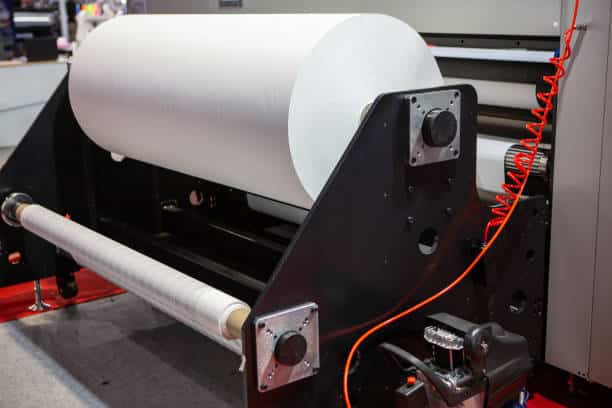Can Regular Printer Paper Be Used In Sublimation?
With the aid of the well-liked sublimation printing technology, you can imprint high-resolution images on a variety of substrates, such as plastic, ceramic, and textiles. Choosing the proper paper is essential for achieving the desired results with your designs. We recommend always using dedicated Dye Sublimation to achieve the best effect and finish.
Sublimation Printing Fundamentals
In sublimation printing, pigment is transferred to a material using heat. After the design has been printed on sublimation paper, the material is transferred utilising pressure and heat. As a result, the print is vivid and long-lasting; it will not diminish or crack over time.
Advantages of sublimation printing:
- Vibrant and long-lasting prints of the highest calibre
- The capacity to print on diverse materials, including textiles, ceramics, and plastics.
- The capacity to easily print intricate designs and photographic images
- The ability to produce custom products in limited quantities at a reasonable price.
Sublimation Paper Types
Specialised paper designed for use with sublimation pigments. There are three principal varieties of sublimation paper:
- Sublimation Paper, Adhesive: The coating on tacky sublimation paper holds the transfer paper in position during the transfer procedure. This paper is ideal for printing on textiles because it inhibits transfer paper from shifting during the transfer process.
- Adhesive-free Sublimation Paper: Non-adhesive sublimation paper lacks a tacky coating and is ideal for use on rigid substrates like ceramics and metals.
- Hybrid Sublimation Paper: Hybrid sublimation paper has a coating that is semi-tacky and can be used for a variety of purposes.
Comparison of Sublimation Paper and Regular Paper
In several ways, sublimation paper differs from standard printer paper. Sublimation paper is coated specifically to accept sublimation inks and can withstand the high temperatures and pressures of the transfer process.
Even though it can sometimes work, normal printer paper on the other hand, is not coated and does not retain ink or transfers as well. We do not recommend it!
Standard office paper and Sublimation
Although conventional printer paper may appear to be a cost-effective alternative to sublimation paper, its use can result in a number of issues. Normal printer paper cannot withstand the high temperatures and pressures of the sublimation transfer process, resulting in indistinct or distorted designs. In addition, standard printer paper does not absorb ink as well, which can cause leakage or smearing during the transfer process.
Prefered Sublimation Paper for Various Applications
To achieve the desired results with sublimation printing, the type of paper used is vital. There are a variety of sublimation papers available on the market, each with distinct attributes and specifications. The following are the finest sublimation papers for various applications:
Sublimation textile paper
When printing on textiles, use sublimation paper that can withstand hefty ink loading and generate vibrant colours. TexPrint R sublimation paper is a popular option for sublimation printing on apparel. This paper is designed for printing on polyester fabrics because it generates high-quality images and accurate colour reproduction.
Sublimation paper for difficult substrates
When sublimation printing on hard surfaces such as ceramic flasks and phone covers, it is necessary to select a paper capable of producing crisp, vivid images. Jetcol HTR sublimation paper is an excellent option for such applications. This paper’s capacity to transmit ink to firm surfaces without staining or oozing allows for the production of high-quality photographs.
Paper for sublimation on flexible substrates
When sublimation printing on delicate substrates such as mousepads and neoprene koozies, it is necessary to use paper that can handle hefty ink loading and produce distinct images. Due to its ability to maintain the transfer during the heat transfer process, TexPrint Thermo Tack sublimation paper is a popular choice for delicate substrates. This aids in producing crisp, vibrant images and eliminates ghosting.
How to Select the Appropriate Sublimation Paper
Choosing the proper sublimation paper can be a daunting endeavour, but there are a number of considerations that can assist. Considerations when selecting sublimation paper:
- Cost: The cost of sublimation paper varies, so it is essential to consider your budget when selecting paper.
- Quality: The quality of the sublimation paper may impact the quality of the ultimate product. Choose papers with gorgeous, vibrant images.
Consider the type of application for which the paper will be used, such as textiles or harsh surfaces.
Check the sublimation paper’s compatibility with your printer and ink. Guidelines for selecting the most suitable sublimation paper for your project:
- Conduct research: Consider the opinions and suggestions of other sublimation printers when making your choice.
- Test various papers: Before committing to a large purchase, test out various materials to determine which functions best for your endeavour.
If you are uncertain about which sublimation paper to select, don’t be hesitant to consult a supplier or an experienced sublimation printer.
Selecting the proper sublimation paper is crucial for producing vibrant, high-quality sublimation prints. When selecting paper, it is essential to consider factors such as price, quality, application, and compatibility. Remember to conduct research, test different papers, and seek assistance when necessary. By adhering to these guidelines, you can ensure that your sublimation printing projects are always of the highest quality. And remember, when in doubt, always choose a dependable and reputable supplier such as Nova Sublimation to guide you in the correct direction.



